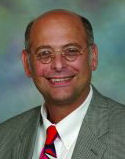Hospital failure
Like a conscientious physician, hospitalists must play doctor to their own facilities.
There are many types of failure in the hospital. Any intern who has had the misfortune of being on call on my service knows the pain of the call from the outside emergency room. The doctor, in an accent somewhere between Agatha Christie's Hercule Poirot and Apu Nahasapeemapetilon from The Simpsons, tells of a horribly sick patient coming to the service. The poor suffering soul has heart failure, kidney failure, liver failure, and—with peeling skin—may also have skin failure. At this point the intern usually has a seizure, starts sputtering invectives, or recognizes her eccentric attending on the phone.
So kidneys, livers and hearts can fail. Students can fail. But skin and brains don't fail, do they? (Brain Failure is a Chinese punk rock band, but that doesn't count.) “Skin failure” has in fact been described as an entity, but has not entered the standard medical lingo. For some reason, endocrine glands don't fail; instead, they become insufficient. Charlie Mayo said, “The spleen is an organ of contradiction and mystery: in health of relatively unimportant function, in disease a menace of grave import.” But he missed the spleen's sad truth: it has never been allowed to fail.

What about hospitals? Can they fail? Financial failure is an obvious example of how hospitals can fail. It may also be said that a hospital can “fail to diagnose” or “fail to treat.” But that's not what I am talking about.
A hospital is not like a kidney, though you may get “pissed” at the administration. It's not like a spleen or liver. Often, there are few brains involved (though there are plenty of rectums). A hospital is most like a heart—it has a beat.
Like that muscular organ made popular by poets and Valentine's Day, the hospital can develop congestive failure. When the hospital is contracting normally, patients enter the facility, make their way through, and eventually leave. As patients clog the system, efficiency fades. Patients are seen less frequently, and are often on scattered units. The wait time for procedures skyrockets, and the consult services fall way behind. The nurses become stressed, the students fidgety, the interns overloaded, and the attendings cataplectic. The preload begins to rise as the emergency room (with Drs. Frank and Starling working this shift) fills with patients waiting for beds that aren't clean yet. The transportation team can't get the patients to move, the phlebotomists are stuck, and the therapists need therapy.
But the problem's not just the preload; it's also the afterload. How many times do you cross your fingers waiting for a patient to be discharged? The nursing home can't take them after 1 p.m. and it's already 2. The family can't come to drive them, the pharmacy is backlogged, and the patient has the poor grace to try to exsanguinate immediately prior to your hitting the discharge button on the electronic orders. This only makes the congestion worse.
How can we reduce the preload? One way is to avoid unnecessary admissions. Many patients get admitted because they have no primary care provider, or could not get an outpatient appointment, or have failure to thrive and just can't be at home anymore. With an astute social service network, those social admissions can be directly placed outside the hospital, and appointments found. An emergency department that deals effectively with these issues can make a huge difference in patient flow, as well as positively affecting the bottom line.
Afterload can also be reduced. The best way to do this is to discharge patients in a safe and timely manner. Again, social services comes to the rescue by finding nursing home beds and arranging home antibiotics, often with an infusion therapy nurse. Of course if a service has a “cap,” there may be a reverse and perverse incentive not to discharge, keeping patients on service as “space-occupying lesions” preventing further admissions. This is a condition which should not be tolerated. (Unless I am doing it, since I must have a good reason.)
The most important aspect of afterload reduction—the discharge of the patient—is to avoid premature dismissal. As with a heart, a shortened stay can lead to a re-entrant phenomenon. Patients who are discharged prematurely to get the census down can lead to dreaded readmissions, which really clog the system. Under new CMS guidelines, this will have a distinct financial impact on the hospital.
Of all the patients putting the hospital at risk for readmission failure, it is ironic that it is heart failure patients who pose the highest risk. Each year over one million people are admitted to an inpatient setting for heart failure, and according to Medicare data, about a quarter are readmitted within 30 days, costing $17.4 billion a year.
So we all want our health care system not to fail. Like a conscientious physician who monitors the I's and O's, watches the renal function, evaluates the ejection fraction, councils against smoking and dietary indiscretion, and gives the right combination of beta blockers, diuretics and angiotensin inhibitors, hospitalists must play doctor to their own facilities. We must work with the emergency department and social workers. We must function efficiently, and move our patients through the turbulent flow of the hospital, to be ejected into the outpatient world, and stay there. We must do this, or our hospitals will fail.



